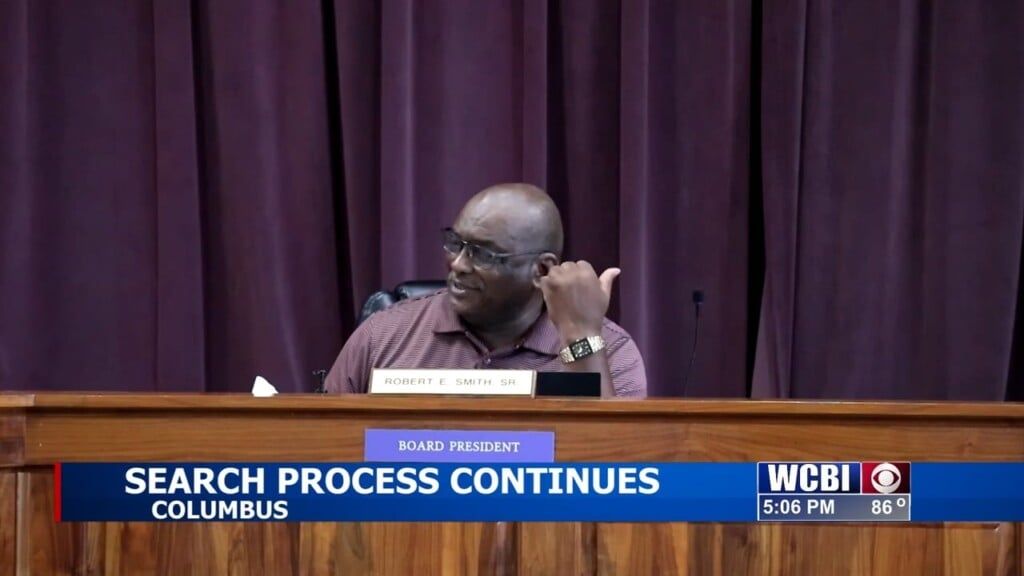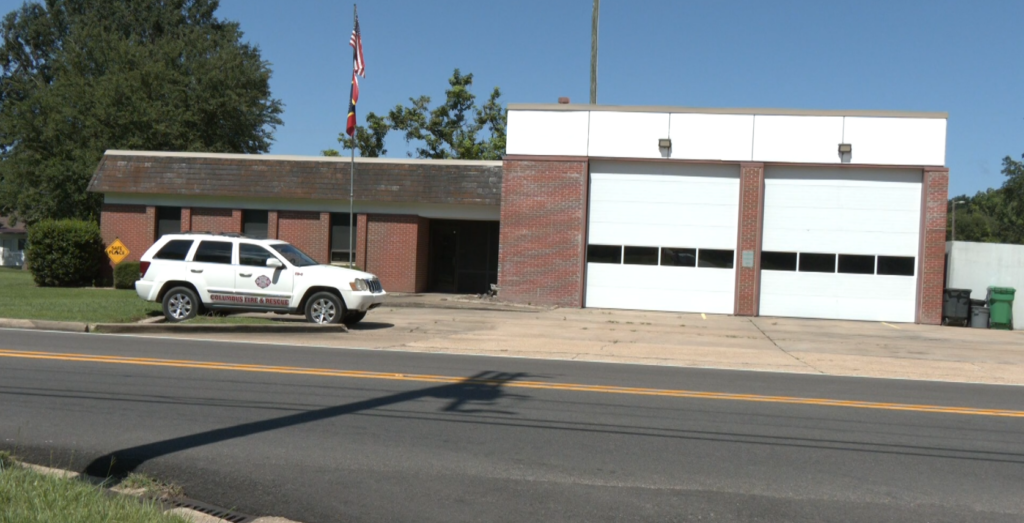2017 Atlantic Hurricane Season
Officially hurricane season runs from June 1st through November 30th and we’ve officially reached the end. However, tropical storms can form at anytime during the year. Just last year we had Hurricane Alex that formed in mid-January and a few years ago we had Tropical Storm Olga that formed in late December. Our first storm this year was Tropical Storm Arlene that formed in the North Atlantic on April 19th and to this point, the last storm was Rina that dissipated on November 9th.
 From the beginning, this season was expected to be slightly more active than normal due to the weakened El Nino in the eastern Pacific Basin. In a weak El Nino year, the Sea-Surface temperatures in the Atlantic and Caribbean are often above average and wind shear that tears storms apart is generally weaker. Because of this, the National Hurricane Center in Miami Florida anticipated 11 to 17 named storms to develop where 5 to 9 of them would become hurricanes. We have had 17 named storms, 10 hurricanes and 6 major hurricanes which surpasses the expectation of 2-4 major hurricanes outlined by the NHC.
From the beginning, this season was expected to be slightly more active than normal due to the weakened El Nino in the eastern Pacific Basin. In a weak El Nino year, the Sea-Surface temperatures in the Atlantic and Caribbean are often above average and wind shear that tears storms apart is generally weaker. Because of this, the National Hurricane Center in Miami Florida anticipated 11 to 17 named storms to develop where 5 to 9 of them would become hurricanes. We have had 17 named storms, 10 hurricanes and 6 major hurricanes which surpasses the expectation of 2-4 major hurricanes outlined by the NHC.

These are the lists of Hurricane names for the next 3 years. The lists repeat themselves every 6 years.
This season has already been compared to the historically active 2005 Atlantic Hurricane season that included storms such as Katrina, Rita and Wilma. Interestingly enough, the list of names from the 2005 season is also being used this year with a few modifications. After the 2005 season there were 5 hurricane names retired from future lists. Those names include Dennis (replaced with Don), Katrina (replaced with Katia), Rita (replaced with Rina), Stan (replaced with Sean), and Wilma (replaced with Whitney).
As I mentioned earlier, this season started off earlier than normal. Arlene formed in the north Atlantic in mid April, a month and a half before the official beginning of the Atlantic Hurricane season. This was the earliest forming tropical storm in the Atlantic since Hurricane Alex in January 2016 and before that, Tropical Storm Ana in 2003 . Tropical Storm Bret formed exactly 2 months later, in mid June. Bret was a slow developing storm and only spend 24 hours as a named tropical storm.
Tropical Storm Cindy was the first storm to have impacts on the US. On June 20th Cindy was officially deemed a tropical storm and was subsequently named. Cindy would then make landfall along the Texas and Louisiana gulf coasts on June 22nd. Tropical depression Four developed in early July but was unable to attain tropical storm status. Tropical Storm Don formed in Late July and brought plenty of wind and rain to the Windward Islands.
Tropical Storm Emily was the second storm of the season to bring impacts to the US. Emily formed in July 31st along the Florida gulf coast. Emily combined with a frontal system to bring torrential rain to many areas of Florida. In early August Franklin became the first hurricane of the 2017 Atlantic season. Franklin made it’s first landfall around the Yucatán Peninsula of Mexico before entering the Bay of Campeche. Eventually Franklin would dissipate over mainland Mexico but would regenerate into Tropical Storm Jova in the Eastern Pacific. On August 17th, Hurricane Gert became the strongest Atlantic Hurricane so far in the season as a Category 2 storm. Gert posed no direct threat to land, but many along the US East Coast saw effects from high surf and rip currents.
 Once mid-August arrived, the Atlantic tropics really picked up. Hurricane Harvey would be the first of many major hurricanes to impact the US and other Atlantic countries. Harvey developed in the Eastern Atlantic and began his slow crawl westward on August 17th. While in the Atlantic Ocean, Harvey only achieved tropical storm status and was soon torn apart by wind shear in the Caribbean Sea. After passing over the Yucatán Peninsula and entering the Bay of Campeche, Harvey rapidly intensified going from a Tropical Depression to a Category 4 hurricane in 48 hours. At this point Harvey was on a collision course for southeastern Texas. Harvey would soon make landfall near Rockport Texas as a Category 4 hurricane, the first major hurricane to make a US landfall since Wilma in 2005.
Once mid-August arrived, the Atlantic tropics really picked up. Hurricane Harvey would be the first of many major hurricanes to impact the US and other Atlantic countries. Harvey developed in the Eastern Atlantic and began his slow crawl westward on August 17th. While in the Atlantic Ocean, Harvey only achieved tropical storm status and was soon torn apart by wind shear in the Caribbean Sea. After passing over the Yucatán Peninsula and entering the Bay of Campeche, Harvey rapidly intensified going from a Tropical Depression to a Category 4 hurricane in 48 hours. At this point Harvey was on a collision course for southeastern Texas. Harvey would soon make landfall near Rockport Texas as a Category 4 hurricane, the first major hurricane to make a US landfall since Wilma in 2005.
With weak steering flow, Harvey was forecasted to slowly meander over Texas dropping over 40 inches of rain in some areas near Houston. This caused record flooding across Southeastern Texas. At the Houston Airport it rained essentially non stop for nearly 60 hours and they accumulated over 35 inches of rain over this period. This rapid rainfall caused many areas to not only flash flood, but also left many river gauges in major flood stage for many days after the conclusion of the rain. [su_youtube url=”https://www.youtube.com/watch?v=dW54QnHyFNI” autoplay=”yes”]2017 Atlantic Hurricane Season
 Once the rain finally ended, it took many days for the flood waters to recede and you could watch the dirty flood waters flow back into the Gulf of Mexico from satellite images. An estimated 100,000 homes were impacted in some way by Harvey.
Once the rain finally ended, it took many days for the flood waters to recede and you could watch the dirty flood waters flow back into the Gulf of Mexico from satellite images. An estimated 100,000 homes were impacted in some way by Harvey.
 In addition to the record flooding event, The tornado threat from Harvey was immense. The Houston NWS office alone issued 148 tornado warnings during Harvey. In our area, the National Weather Service offices of Jackson MS, Birmingham AL and Memphis TN issued 13, 34 and 11 tornado warnings respectively. 98 tornado reports associated with Harvey were verified by the SPC.
In addition to the record flooding event, The tornado threat from Harvey was immense. The Houston NWS office alone issued 148 tornado warnings during Harvey. In our area, the National Weather Service offices of Jackson MS, Birmingham AL and Memphis TN issued 13, 34 and 11 tornado warnings respectively. 98 tornado reports associated with Harvey were verified by the SPC.


Irma was the next storm to form in the Atlantic in late August. Irma would take nearly 2 weeks to approach the US but boy would it pack a punch. On September 5th, Irma would be the first Category 5 storm to form in the Atlantic this season. Irma went through numerous eyewall replacements which allowed her wind span to significantly increase. Irma would make landfall along the northern coast of Cuba as a Category 5 storm before eventually turning North to make a US landfall near Cudjoe Key as a Category 4 hurricane. Irma would make another US landfall just south of Naples Florida as a Category 3 hurricane before moving through the Florida Peninsula as a weakening hurricane. Find more information about Irma here.
 Hurricane Jose formed right on the heels of Irma, developing just a few days later. Jose would eventually reach Category 4 intensity as it approached the Leeward Islands. Shortly there after, Jose weakened and began to turn North, away from the majority of the Caribbean Islands. Jose would also form a loop in the open Atlantic ocean before moving back West, closer to the US. No landfall or major impacts were expected, but tropical storm watches were issued for much of the mid Atlantic and Northeast coasts. Jose would move all the way to the east of Maine before fully dissipating on September 26th.
Hurricane Jose formed right on the heels of Irma, developing just a few days later. Jose would eventually reach Category 4 intensity as it approached the Leeward Islands. Shortly there after, Jose weakened and began to turn North, away from the majority of the Caribbean Islands. Jose would also form a loop in the open Atlantic ocean before moving back West, closer to the US. No landfall or major impacts were expected, but tropical storm watches were issued for much of the mid Atlantic and Northeast coasts. Jose would move all the way to the east of Maine before fully dissipating on September 26th.
Hurricane Katia was a cluster of thunderstorms in the Bay of Campeche before finally becoming organized on September 6th. With the warm waters and minimal wind shear, Katia was able to develop into a Category 2 hurricane just a few days later. Eventually Katia would crash into the Mexico coastline as a weak Category 1 storm bringing winds and flooding rains to many municipalities. Within 24 hours of landfall, Katia dissipated into a remnant low, but redeveloped once it reached the Eastern Pacific, being renamed to Hurricane Otis.
Lee would be the next storm to form in the Atlantic Ocean. On September 16th, Lee was officially named as a tropical storm. A day later, Lee would be ripped apart by wind shear and was downgraded to a Depression and eventually a remnant low. However a week later, warm waters and minimal wind shear allowed Lee to redevelop into a tropical storm and eventually a Category 3 hurricane. Lee remained out to sea through the whole ordeal and was never a threat to land.
 Maria was the next Atlantic system. On September 16th, the NHC identified a potential tropical cyclone that would become Hurricane Maria just a day later. 24 hours after the hurricane classification, Maria underwent extremely rapid intensification becoming a Category 5 storm just before landfall on the island of Dominica. Shortly there after, Maria would make landfall in Puerto Rico making it the 3rd major hurricane to make a US landfall this season.
Maria was the next Atlantic system. On September 16th, the NHC identified a potential tropical cyclone that would become Hurricane Maria just a day later. 24 hours after the hurricane classification, Maria underwent extremely rapid intensification becoming a Category 5 storm just before landfall on the island of Dominica. Shortly there after, Maria would make landfall in Puerto Rico making it the 3rd major hurricane to make a US landfall this season.

This shows what a typical Doppler Radar looks like and what is left of the Puerto Rico radar. Photo credit to Capital Weather Gang from The Washington Post
The storm destroyed the Puerto Rico radar just before landfall making it impossible to warn for possible tornadoes. After being bombarded by Category 4 winds of up to 175 miles per hour, Puerto Rico was devastated. The entire electric grid is down and communications from the island are limited. Flooding was also a concern after torrential rains caused a dam failure in Northwestern Puerto Rico. Maria would make a turn to the north after impacting Puerto Rico impacting several other Atlantic islands as a Category 2 storm. Maria came close to the Outer Banks of North Carolina and many were fearful that it would have major impacts for the US. Fortunately Maria stayed decently far offshore, but some areas did see wind gust in excess of 35 miles per hour and saw some storm surge. Maria has now pulled away from the US and is rapidly moving off to the Northeast into the North Atlantic.
[su_youtube url=”https://www.youtube.com/watch?v=hMfpIpEQ2MY” autoplay=”yes”]After Maria, the Atlantic had a lull in tropical activity. Once Maria had finally dissipated on September 30th, there were 3 days where the NHC was not expecting any significant development. On October 3rd, the NHC outlined an area with a 60% chance of development which became Tropical Depression 16 the next day. Early on October 5th, as it approached the coastline of Nicaragua, Nate was officially named. Once back over the water, Nate would strengthen into a hurricane on October 6th at 8 PM Eastern Time. At this point in time, it looked as though Nate would pack a significant punch as it made landfall along the MS/AL Gulf Coast. However, Nate never developed quite as much as was anticipated, a rarity for this season. Officially Nate had 2 landfalls, one at the mouth of the Mississippi River while the second was between Gulfport and Biloxi Mississippi. While areas along the coast had plenty of rain and some storm surge as Nate made landfall, here in our area, impacts were less severe than expected. Much of the WCBI viewing area saw less than a half inch of rain and winds stayed below 20 mph across the area.
 Shortly after Nate dissipated, Tropical Storm Ophelia formed in the open Atlantic. Within the next 48 hours Ophelia would strengthen to a hurricane, making it the 10th consecutive hurricane to form in the Atlantic. Just 24 hours after being declared a hurricane, Ophelia would unexpectedly become a Category 3 hurricane with sustained winds of 115 mph. While Ophelia was not expected to have any US impacts, it would eventually race off to the east bringing chaos for Ireland and Great Britain. By the time Ophelia had made it that far east, it was no longer classified as a tropical system but still had hurricane force winds that made their way on shore.
Shortly after Nate dissipated, Tropical Storm Ophelia formed in the open Atlantic. Within the next 48 hours Ophelia would strengthen to a hurricane, making it the 10th consecutive hurricane to form in the Atlantic. Just 24 hours after being declared a hurricane, Ophelia would unexpectedly become a Category 3 hurricane with sustained winds of 115 mph. While Ophelia was not expected to have any US impacts, it would eventually race off to the east bringing chaos for Ireland and Great Britain. By the time Ophelia had made it that far east, it was no longer classified as a tropical system but still had hurricane force winds that made their way on shore.
After Ophelia, there was another lull in tropical activity. The next system would not form until Late October. A weak low pressure system off the West Coast of Florida was being watched as a potential area for development. Eventually it had enough organization to be deemed Tropical Depression 18 and would briefly meet tropical storm characteristics leading to it being named Tropical Storm Philippe. Almost immediately after being named, Philippe was swept up by a cold front that came across the Mississippi Valley and lost all tropical characteristics.
A week later, Rina would be the 17th tropical storm to form in the Atlantic this season. Rina would begin as tropical depression 19, but on November 6th, strengthened into a tropical storm. It developed in the northern Atlantic, very close to where Tropical Storm Arlene developed and where Hurricane Lee redeveloped. At no point was Rina a majorthreat to land. Eventually after winds shear began to rip the storm apart, a cold front would sweep up Rina, rendering it a post tropical storm.
 This year was an active hurricane season, but as a whole didn’t break any records, but it did come close. The 17 storms that formed this year makes it the 6th highest of all time, the 10 hurricanes is tied for the 4th highest and the 6 major hurricanes was tied for 3rd highest. 2017 also had the second highest amount of Accumulated Cyclone Energy (also known as ACE) which is a measure of total energy generated by tropical storms. For more information on ACE, click here. In addition, 2017 was close to breaking records for number of Named Storm, Hurricane and Major Hurricane Days. This takes into account how much time throughout the season that there is a named storm (at least a tropical storm), a hurricane or a major hurricane. This was the season with the fourth most named storm days and the second most hurricane and major hurricane days.
This year was an active hurricane season, but as a whole didn’t break any records, but it did come close. The 17 storms that formed this year makes it the 6th highest of all time, the 10 hurricanes is tied for the 4th highest and the 6 major hurricanes was tied for 3rd highest. 2017 also had the second highest amount of Accumulated Cyclone Energy (also known as ACE) which is a measure of total energy generated by tropical storms. For more information on ACE, click here. In addition, 2017 was close to breaking records for number of Named Storm, Hurricane and Major Hurricane Days. This takes into account how much time throughout the season that there is a named storm (at least a tropical storm), a hurricane or a major hurricane. This was the season with the fourth most named storm days and the second most hurricane and major hurricane days.
While as a whole 2017 didn’t break any seasonal records, several individual storms did break records. Hurricane Harvey, the first major hurricane of the season, now holds the record for the most rain in a single US location due to a tropical system. The previous record was held by Tropical Storm Amelia which dropped 48 inches of rain. To this day, rainfall amounts over Texas are still being verified, but there has been a verified report of 56 inches. Harvey was also the costliest Atlantic hurricane, surpassing Katrina and Sandy. Hurricane Irma made it’s own records. It was the storm with the fastest winds to form in the Atlantic Ocean (versus the Caribbean Sea or the Gulf of Mexico where most strong hurricanes form) with sustained winds of 185 mph. Irma also maintained that wind speed for 37 hours which is the longest a storm has maintained that strength. Irma also maintained category 5 status for 3 days and 3 hours, the longest in the satellite era. In addition Irma was the third-easternmost forming Category 5 hurricane on record. There were a few other records set this year based on geography. Hurricane Ophelia became the easternmost major hurricane at 26.6°W and stayed a major hurricane until passing 20°W. Two other storms this season were close to geographic records. Tropical Storm Bret was the 2nd southernmost (Northern Hemisphere) Tropical Storm and Tropical Storm Arlene was the 9th northernmost Tropical Storm. Arlene was also the 5th earliest developing Tropical Storm on record. In addition, 2017 marks the first season* where 3 major hurricanes made landfall in the US (done by Harvey, Irma and Maria in Puerto Rico). It is likely that at least 3 of this years hurricane names will be retired by the World Meteorological Organization.
*2005 had 4 major land-falling hurricanes.






Leave a Reply